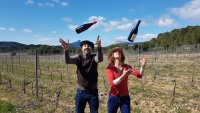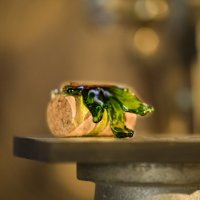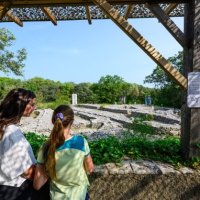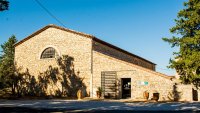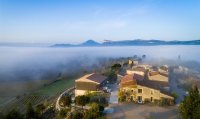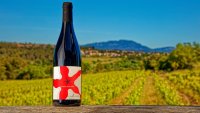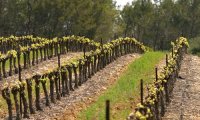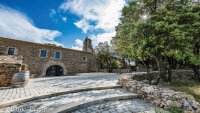PDO Pic Saint-Loup

Tasting, terroir and landscapes
The wines of the Pic Saint Loup PDO owe much to the work of men and women, but also to a unique terroir and climate whose origins lie in the geology and geography of the area.
The story of this terroir is a beautiful one. Initially, it was a poor area, with a harsh environment, populated by sheep breeders and farmers. But the winegrowers of the time believed in its potential. There wasn't much room... Which limited the production of large volumes. So, creating great wines is a choice of passion but also of reason.
The soils and landscapes had to be shaped by removing the stones; plots of land had to be reclaimed from the garrigue; these are known as clearing vines or enguarrigue vines; the result is a mosaic of landscapes, alternating vineyards, olive groves, pine forests, stretches of garrigue and limestone sculptures forged by time.

This open garrigue blends with the vines to create a whole world of flavours and scents: thyme, rosemary, menthol, liquorice... A richness and diversity that adds freshness and liveliness and contributes to the aromatic complexity of the PDO wines.
If we go back further, the origins of the PDO terroir lie in the very formation of the Pic Saint-Loup. At the end of the Jurassic era, the region was covered by the ocean. Millions of years of sedimentation created the limestone that we use today in our garrigues.
During the surrection (*) of the Pyrenees 40 million years ago, this limestone was pushed dozens of kilometres. Sliding along the fault from Saint-Gély-du-Fesc to Corconne, the limestone strata folded and rose to form the Pic Saint-Loup.
*Surrection: the gradual uplift of part of the earth's surface to form a mountain.

It is on either side of this fault that the plots of land and the Pic Saint Loup appellation area are spread out today. It is the backbone of the appellation, its link, its visceral anchorage to its geological history. This history has given the terroir an extremely varied range of soils: hard limestone, soft limestone, conglomerates, dolomites, scree, river limestone and marl. This geological diversity guarantees both drainage and the water retention needed to maintain water balance.
If you pay close attention, you'll be able to detect a reference to these chalky soils on tasting : a little claw on the finish, very light, with very fine, gentle tannins.
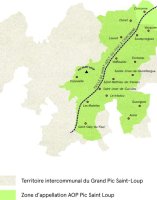
Finally, the Pic Saint Loup PDO enjoys a unique and highly favourable climate, at the crossroads of a continental and a Mediterranean climate. The Mistral and Tramontane winds provide cool, dry air that protects the vineyards from the advance of the damp "marin", a factor in disease. Thanks to the Cévennes foothills, the Causse de l'Hortus and the Pic Saint-Loup, these winds, which can be violent, are regular and moderate here. But the sea breezes bring with them the heavy rainfall that is essential for any crop, as they cling to the first ridges of the Cévennes.
With this favourable microclimate, the temperature range between day and night is considerable. It's this cool night-time temperature that makes for very elegant wines, full of finesse and rich, delicate aromatic complexity.
Pic Saint Loup PDO in numbers
- DESIGNATION ZONE
17 municipalities
73 wines estate
3 wine cellars - WINES
90% red
10% pink - MAIN GRAPE VARIETIES
(ROUGES COMME ROSÉS)
Syrah au moins 50% pour les rouges et 30% pour les rosés
Grenache noir
Mourvèdre
- MINIMUM REARING PERIOD
(FOR RED WINES)
12 à 24 mois
en moyenne, selon les cuvées - PRODUCTION
45 000 hl/an
6M de bouteilles
38 hl/ha de rendement moyen
To find out more
The Pic Saint-Loup winegrowers
27 resultsSort
